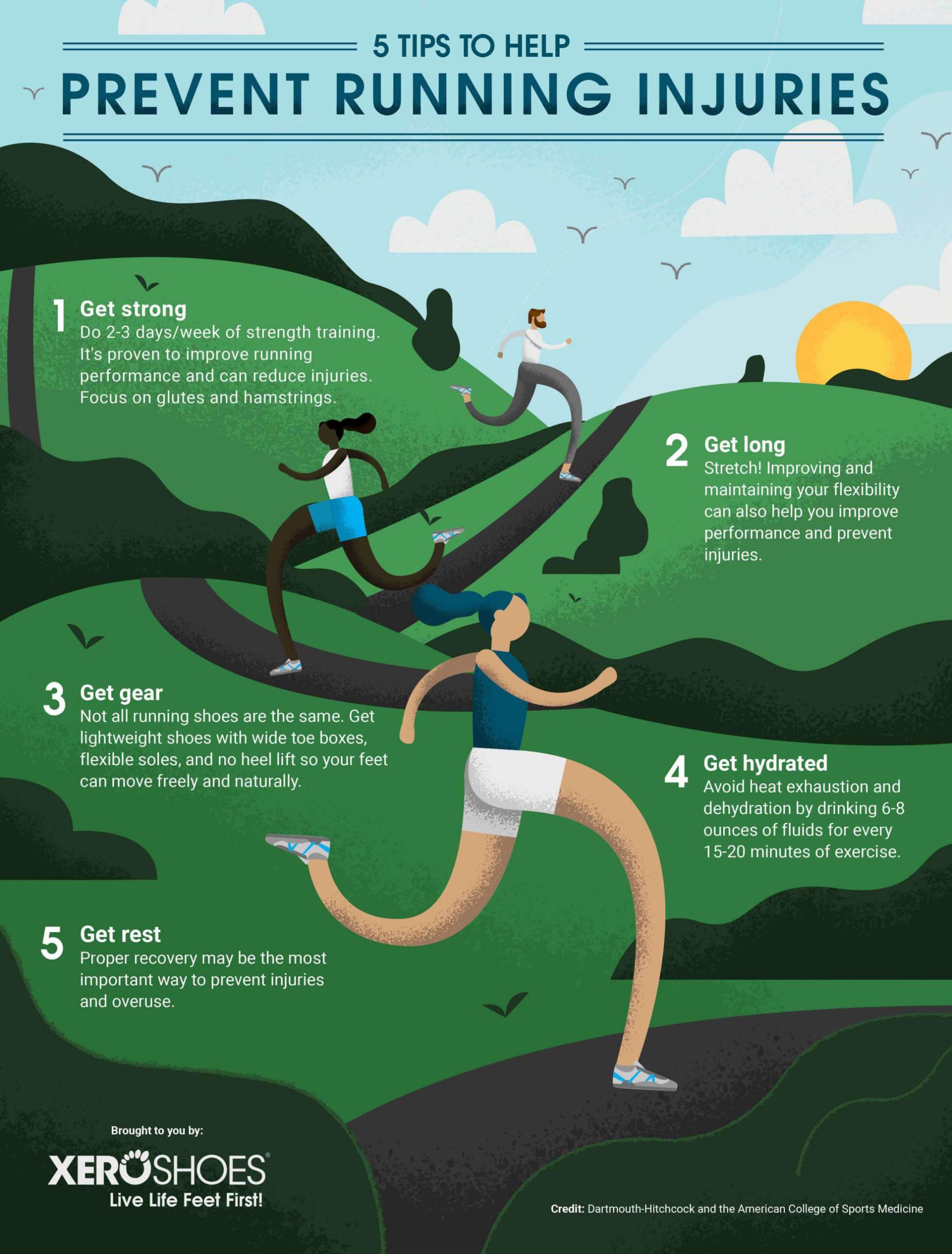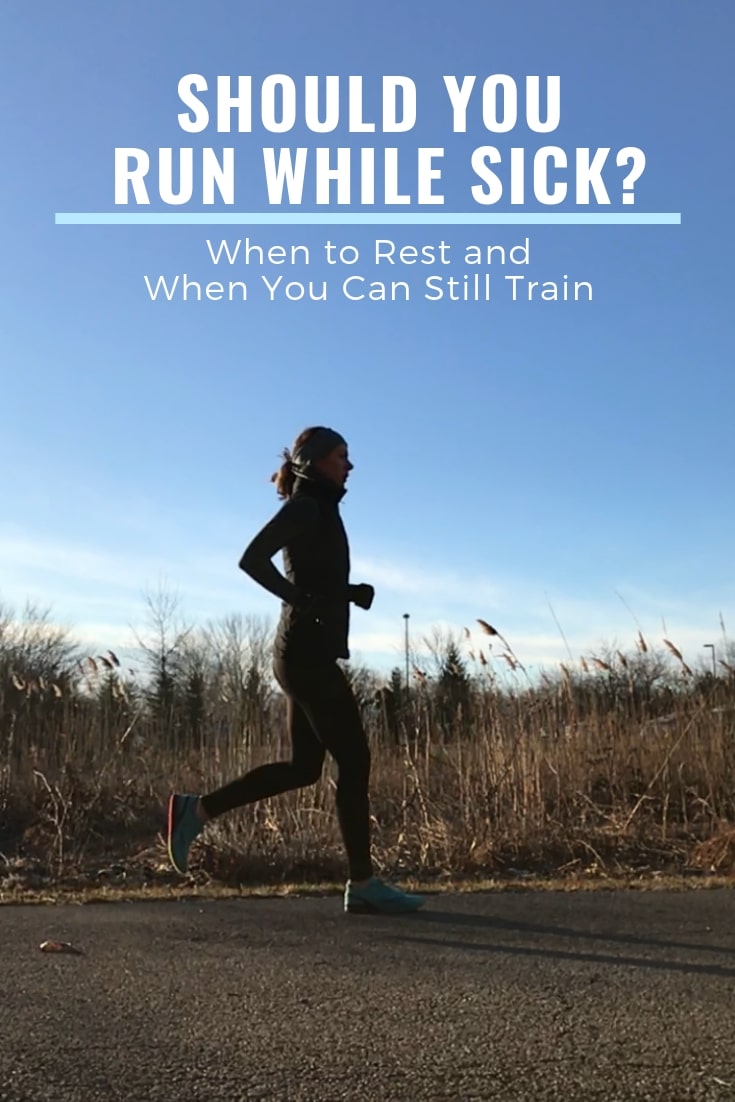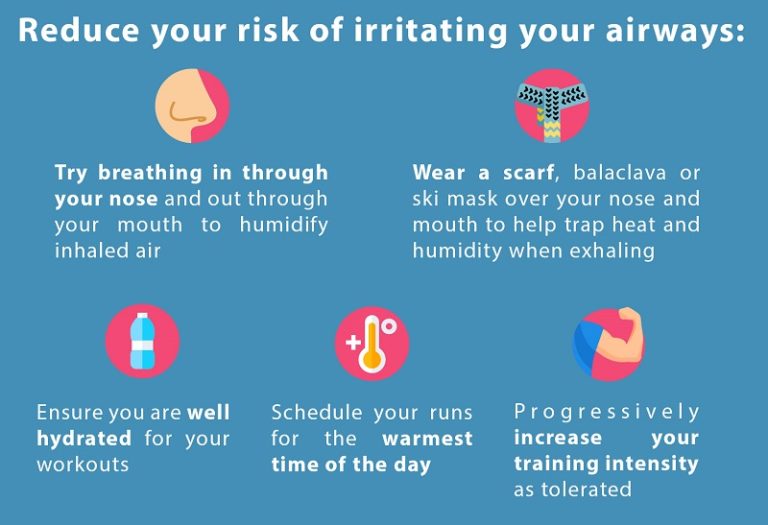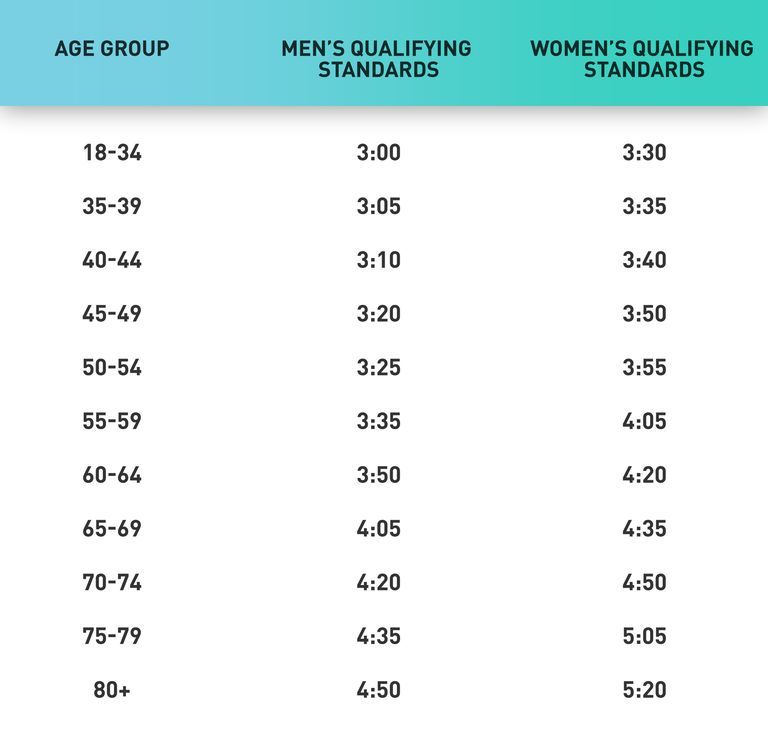How to Prevent Running Injuries?
To prevent running injuries, ensure proper warm-up and cool down routines before and after running. Incorporate strength training exercises to improve muscle stability and flexibility, and gradually increase running intensity to allow your body to adapt.
Also, invest in quality footwear that provides adequate support and cushioning for your feet to reduce the risk of injuries. Running is a popular form of exercise that offers numerous health benefits. However, it’s important to take steps to prevent injuries that can hinder your progress and sideline your fitness goals.
By following some simple guidelines and incorporating specific strategies into your running routine, you can minimize the risk of common running injuries and enjoy a safe and injury-free workout experience. This article will explore effective ways to prevent running injuries and keep you on track towards achieving your running goals.

Credit: strengthrunning.com
Proper Warm-up
A proper warm-up is crucial in preventing running injuries as it prepares the body for the physical exertion ahead. It helps increase blood flow to the muscles, improves flexibility, and reduces the risk of strains and sprains. Incorporating dynamic stretches and joint mobilization into your warm-up routine can greatly contribute to injury prevention.
Dynamic Stretches
Dynamic stretches involve active movements that mimic the exercises or sport you are about to perform. These stretches help improve flexibility, warm up the muscles, and enhance range of motion. Incorporating movements such as leg swings, arm circles, and walking lunges can effectively prepare your body for the physical demands of running.
Joint Mobilization
Joint mobilization exercises target specific joints to increase mobility and reduce stiffness. These exercises help improve the range of motion in the joints, allowing for smoother and more efficient movement during running. Performing activities like ankle circles, wrist circles, and shoulder rotations can help loosen up the joints and prevent potential injuries.
Building Strength
Building Strength plays a crucial role in preventing running injuries. By incorporating targeted strength training exercises and core strengthening routines into your training regimen, you can fortify your body and reduce the risk of injuries.
Strength Training
Engage in regular strength training exercises to build muscle resilience and enhance overall performance. Include exercises that target major muscle groups such as legs, glutes, and core to improve stability and endurance.
Core Strengthening
Strong core muscles are essential for maintaining proper running form and reducing strain on other parts of the body. Incorporate exercises like planks, Russian twists, and bicycle crunches to strengthen core muscles.
Progressive Training
In progressive training, it is crucial to gradually increase the intensity of your runs to prevent injuries.
Gradual Increases In Intensity
- Start with shorter distances and slow pace.
- Gradually increase distance or pace to challenge your body.
- Listen to your body to avoid overexertion.
Rest And Recovery
- Ensure adequate rest between training sessions.
- Plan regular rest days to allow muscles to recover.
- Incorporate cross-training to prevent overuse injuries.
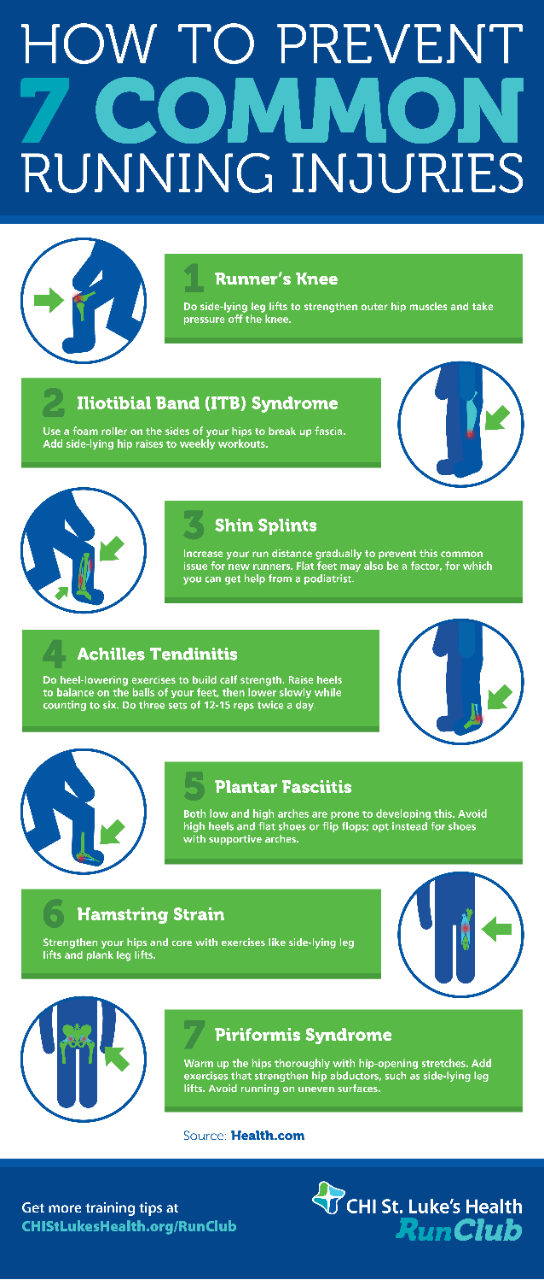
Credit: www.stlukeshealth.org
Proper Footwear
When it comes to preventing running injuries, proper footwear plays a crucial role in ensuring the health and safety of runners. Wearing the right shoes can help mitigate the risk of common running-related issues such as shin splints, plantar fasciitis, and stress fractures. Therefore, choosing the right pair of shoes and knowing when to replace them are essential for injury prevention.
Choosing The Right Shoes
When selecting running shoes, it’s important to consider factors such as foot type, running style, and the type of terrain you’ll be running on. High-quality cushioning and adequate arch support are crucial for reducing impact on the feet and legs. Proper fit and sizing are also vital to prevent blisters, corns, and calluses, which can lead to discomfort and potential injury.
Replacing Worn-out Shoes
Over time, running shoes undergo wear and tear, diminishing their ability to provide adequate support and cushioning. It’s recommended to replace running shoes after approximately 300-500 miles of use, depending on factors such as the runner’s weight and running surface. Inspecting shoes for signs of wear such as flattened midsoles and worn-out treads can help determine when it’s time for a new pair, thereby reducing the risk of overuse injuries.
Listen To Your Body
One of the most important aspects of preventing running injuries is to listen to your body. Your body is constantly sending you signals, and it is crucial to pay attention and respond appropriately to these signals. Recognizing warning signs and seeking professional help are essential steps in taking care of your body and avoiding injuries.
Recognize Warning Signs
Recognizing warning signs is key to preventing running injuries. Your body will often give you signs that something is not right. It could be persistent pain, discomfort, or changes in your movement patterns. Ignoring these warning signs can lead to more serious injuries down the line.
If you experience any of the following warning signs, take them seriously:
- Persistent pain that worsens with activity
- Sharp or shooting pain in specific areas
- Swelling or inflammation that does not subside
- Unusual fatigue or exhaustion during or after runs
- Decreased range of motion or flexibility
When you recognize any of these warning signs, it is essential to take a step back and evaluate the situation. Continuing to push through the pain can lead to further damage and longer recovery times.
Seek Professional Help
If you are experiencing warning signs or have concerns about your running form or technique, seeking professional help is crucial. A sports therapist, physiotherapist, or a professional running coach can provide valuable guidance and help you address any underlying issues.
Here are a few reasons why seeking professional help is beneficial:
- A professional can assess your running form and technique to identify potential issues.
- They can provide personalized training plans and exercises to address your specific needs and prevent injuries.
- They can help you recover from any existing injuries and guide you in proper rehabilitation.
- They can offer advice on proper footwear, nutrition, and cross-training to improve overall performance and reduce the risk of injuries.
Remember, investing in professional help early on can save you from unnecessary pain, frustration, and time off from running.

Credit: therunexperience.com
Frequently Asked Questions For How To Prevent Running Injuries
Faq 1: How Can I Prevent Running Injuries?
Running injuries can be prevented by gradually increasing mileage, wearing proper running shoes, and cross-training.
Faq 2: What Are The Common Running Injuries To Watch Out For?
Common running injuries include shin splints, runner’s knee, and plantar fasciitis. It’s important to listen to your body and seek treatment if needed.
Faq 3: How Important Is Warm-up And Stretching Before Running?
Warm-up exercises and stretching before running are crucial to reduce the risk of injury by preparing your muscles and joints for the activity.
Conclusion
Incorporating proper warm-ups, listening to your body, and focusing on proper form can greatly reduce the risk of running injuries. By following these preventative measures, you can enjoy a safe and fulfilling running experience. Remember, being proactive about injury prevention is key to maintaining an active lifestyle.
Stay informed, stay safe, and happy running!

